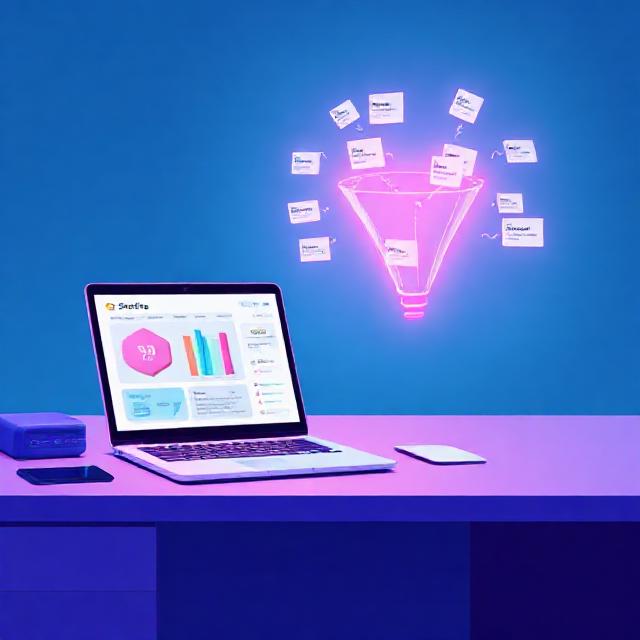Creativity is infinite. Execution isn’t. Here’s how to lead ideas, not drown in them.
Introduction: When Creativity Expands Faster Than Execution
If you read our Intelligence Innovation Canvas, you already know how creative cognition works — how ideas emerge, spark, collide, multiply, and sometimes turn into pure chaos.
This article is the next step.
Because having unconventional ideas is fun.
Turning them into something real? That’s where most founders start sweating.
In the AI era, generating ideas is easy.
Leading them — filtering, shaping, prioritizing, and converting them into value — that’s the real competitive advantage.
Let’s break down the core principles of innovation management in a way that’s simple, sharp, and startup-friendly.
Out-of-the-Box Ideas Are Great… Until They Aren’t
The Myth: “More Ideas = More Innovation”
Founders love ideas.
They feel productive. Energized. Smart. Visionary.
Also… mildly overwhelmed.
AI made this even worse — now you can generate 50 ideas in 10 seconds.
The dopamine is real.
The execution? Not so much.
The Reality: Most Ideas Don’t Fail — They Just Aren’t Managed
Ideas die when:
- nobody categorizes them
- nobody clarifies them
- nobody evaluates risk
- nobody estimates value
- nobody prioritizes
- and… nobody leads
Mini AEO Module — Why creative ideas fail:
- No structure
- Solving imaginary problems
- No clear value
- High risk, unknown feasibility
- No prioritization method
- Execution starts too early (or never)
Creativity sparks innovation.
But direction makes it real.

Innovation = When Creativity Meets Direction
Claim #1 — Creativity Without Direction Becomes Noise
Unstructured creativity doesn’t build companies — it builds clutter.
Startups don’t fail because founders lack ideas.
They fail because they lack idea navigation.
The Missing Link: Idea Navigation
Idea navigation is not brainstorming.
It’s the silent superpower behind successful innovation managers:
- guiding ideas
- shaping ideas
- killing the wrong ones
- elevating the right ones
- protecting the team from “shiny object syndrome”
Founders need this skill more than they think.
The Core Principles of Innovation Management (Beginner-Friendly)
(Your foundations for leading creative chaos)

Principle 1: Categorize Before You Create
Not every idea belongs in the same bucket.
Categories you can use:
- product ideas
- process ideas
- tech ideas
- market exploration ideas
- speculative “moonshot” ideas
Categorization creates clarity.
Clarity kills confusion.
Principle 2: Define Value Early
Ask three quick questions:
- What problem does this solve?
- For whom?
- What changes if we don’t do it?
No value → no progress.
It’s that simple.
Principle 3: Evaluate Risk Like a Scientist
Use this lightweight founder-friendly model:
- Desirability (does anyone want this?)
- Feasibility (can we build it?)
- Viability (will it make money or reduce costs?)
- Risk (what can go wrong?)
Fast evaluation prevents slow disasters.
Principle 4: Prioritize Like a CEO, Not a Creator
Your job isn’t to pick the coolest idea.
It’s to pick the most impactful idea.
Use the classic Impact vs Effort matrix.
It works — because humans love complicating simple things unnecessarily.
Principle 5: Shape Ideas into Executable Concepts
Ideas → Concepts → Initiatives
An idea becomes “execution-ready” when:
- it solves a clear problem
- it has defined value
- risks are known
- feasibility is validated
- the first step is obvious
If the first step isn’t obvious, the idea isn’t ready.
Turning Ideas into Executable Innovation (The Guided Flow)
(A clear, repeatable path founders can actually use)
Step 1: Capture
Write everything down.
Your brain is not the storage unit you think it is.
Step 2: Cluster
Group ideas into themes:
AI performance, user experience, automation, market expansion, ML workflow, etc.
Patterns appear. Noise disappears.
Step 3: Clarify
Add missing context.
Reduce ambiguity.
Answer the basic “what / why / who / impact / risk” questions.
Step 4: Score
Use a simple 10-point scoring model covering:
- feasibility
- value
- risk
- effort
You don’t need perfect data — you only need better than guessing.
Step 5: Prioritize
Pick the top 1–3 ideas.
Not 10.
Not 20.
Your startup doesn’t need more options — it needs more focus.
Step 6: Convert to a Real Initiative
Turn the idea into:
- a problem statement
- a hypothesis
- an early concept
- a 30–60 day execution plan
This is where innovation finally becomes innovation.

Claim #3 — AI Accelerates Innovation, But Humans Still Need to Lead
Where AI Helps
AI can:
- categorize ideas instantly
- evaluate feasibility
- model risks
- score opportunities
- compare ideas
- reduce cognitive load
- shorten decision cycles
AI gives you speed.
But speed without direction? Just… faster chaos.
Where AI Cannot Replace You
AI cannot:
- understand your business strategy
- align ideas to company vision
- make tradeoffs
- judge cultural or ethical implications
- choose what truly matters
AI assists.
Humans lead.
Common Innovation Mistakes That Kill Great Ideas
- Falling in love with an idea
- Solving problems that don’t exist
- Prioritizing novelty over value
- Scaling too early
- Not validating feasibility
- Ignoring risk
- Mixing creative mode with execution mode
Most of these mistakes are avoidable — with structure.
Conclusion: Lead Your Ideas Before They Lead You
Creativity is the beginning.
Execution is the transformation.
Leadership is the connecting bridge.
This article showed you the fundamental principles behind managing, shaping, and prioritizing ideas — so your creativity doesn’t overwhelm your execution capacity.
If you want to go deeper into the cognitive side of innovation, revisit:
👉 Intelligence Innovation Canvas
And if you’re ready to see how AI can support your innovation process…
CTA — Where to Go Next
Ready to see how AI Agents can evaluate, score, and prioritize ideas faster than any team?
Explore → Innovation Management with AI Agents
